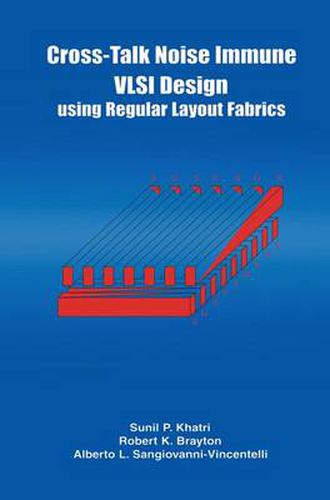Readings Newsletter
Become a Readings Member to make your shopping experience even easier.
Sign in or sign up for free!
You’re not far away from qualifying for FREE standard shipping within Australia
You’ve qualified for FREE standard shipping within Australia
The cart is loading…






This title is printed to order. This book may have been self-published. If so, we cannot guarantee the quality of the content. In the main most books will have gone through the editing process however some may not. We therefore suggest that you be aware of this before ordering this book. If in doubt check either the author or publisher’s details as we are unable to accept any returns unless they are faulty. Please contact us if you have any questions.
This volume was motivated by the problems being faced with shrinking IC process feature sizes. It is well known that as process feature sizes shrink, a host of electrical problems such as cross-talk, electromigration, self-heat, etc. become important. Cross-talk is one of the major problems since it results in unpredictable design behaviour. In particular, it can result in significant delay variation or signal integrity problems in a wire, depending on the state of its neighboring wire. Typical approaches to tackling the cross-talk problem attempt to fix the problem once it is created. This book introduces a framework for cross-talk-free IC design. The main foundation of the book is the use of a predetermined layout pattern on the IC, which we call a layout fabric . The authors characterize this fabric and show how it yields cross-talk-immune designs. Two VLSI design flows are introduced which use the fabric concept. One flow is a minimally modified standard-cell based flow. The other flow uses a network of PLAs to implement the circuit. The authors also introduce wire removal techniques which improve circuit wire ability and thereby reduce circuit area. The new concepts presented here should be of interest to IC designers and researchers.
$9.00 standard shipping within Australia
FREE standard shipping within Australia for orders over $100.00
Express & International shipping calculated at checkout
This title is printed to order. This book may have been self-published. If so, we cannot guarantee the quality of the content. In the main most books will have gone through the editing process however some may not. We therefore suggest that you be aware of this before ordering this book. If in doubt check either the author or publisher’s details as we are unable to accept any returns unless they are faulty. Please contact us if you have any questions.
This volume was motivated by the problems being faced with shrinking IC process feature sizes. It is well known that as process feature sizes shrink, a host of electrical problems such as cross-talk, electromigration, self-heat, etc. become important. Cross-talk is one of the major problems since it results in unpredictable design behaviour. In particular, it can result in significant delay variation or signal integrity problems in a wire, depending on the state of its neighboring wire. Typical approaches to tackling the cross-talk problem attempt to fix the problem once it is created. This book introduces a framework for cross-talk-free IC design. The main foundation of the book is the use of a predetermined layout pattern on the IC, which we call a layout fabric . The authors characterize this fabric and show how it yields cross-talk-immune designs. Two VLSI design flows are introduced which use the fabric concept. One flow is a minimally modified standard-cell based flow. The other flow uses a network of PLAs to implement the circuit. The authors also introduce wire removal techniques which improve circuit wire ability and thereby reduce circuit area. The new concepts presented here should be of interest to IC designers and researchers.